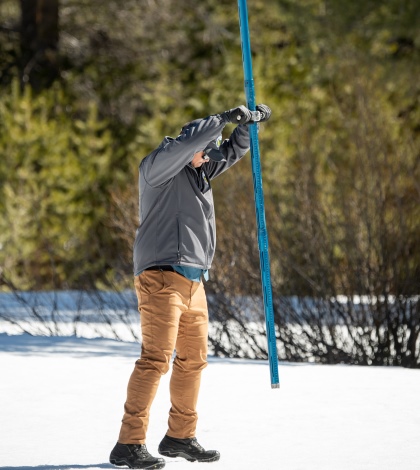The Department of Water Resources (DWR) conducted their third manual snow survey of 2020 at Phillips Station and it didn’t present a pretty picture.
After a wet start for California’s water year, the month of February has been warm and dry. The readings taken of the snow pack yesterday came to 29 inches of snow depth and a snow water equivalent (SWE) of 11.5 inches, which is 47% of the March average for this location.
The numbers may be disappointing after the 113 inches recorded this time last year, but hope to improve on February’s numbers remains.
“Right now, 2020 is on track to be a below-average year but we could still see large storms in March and April that will improve the current snowpack,” said Sean de Guzman, chief of DWR’s Snow Surveys and Water Supply Forecasting Section. “While periods of dry conditions are expected in California, climate change has made them more unpredictable and extreme which is why we must always use the water we have wisely.”
Another reason to remain positive is the state’s six largest reservoirs are still near or at capacity. Oroville and Melones are at 92% and 132% respectively of their historical average and Lake Shasta is holding 78% of its total storage capacity.
Additional measurements from DWR indicate that statewide, the snowpack’s water equivalent is 11 inches, or 46% of the March average.
 California Water News Daily Your Source For Water News in California
California Water News Daily Your Source For Water News in California


